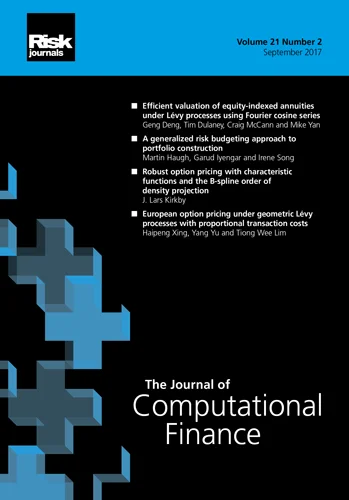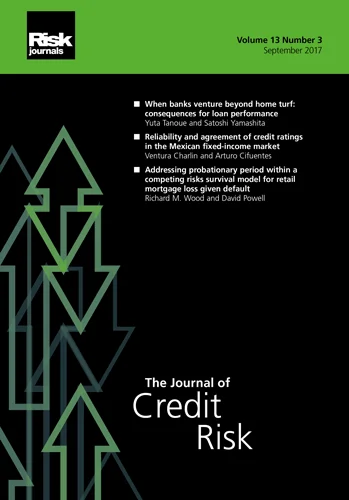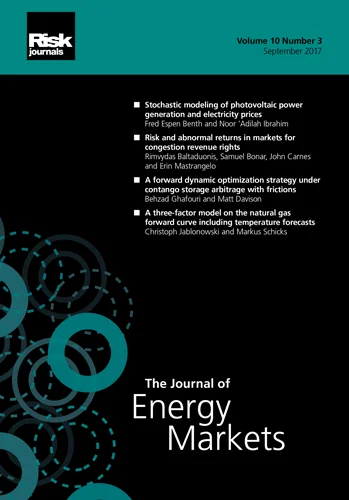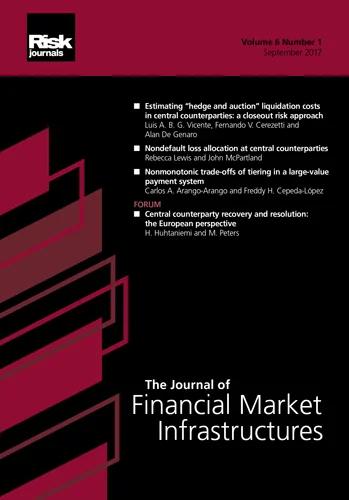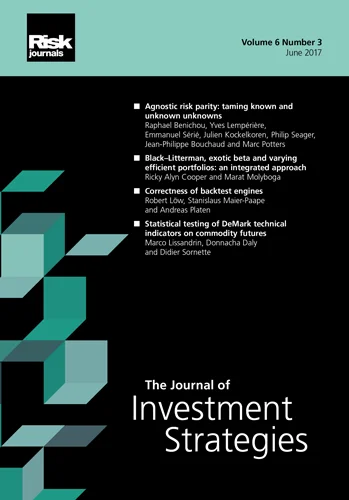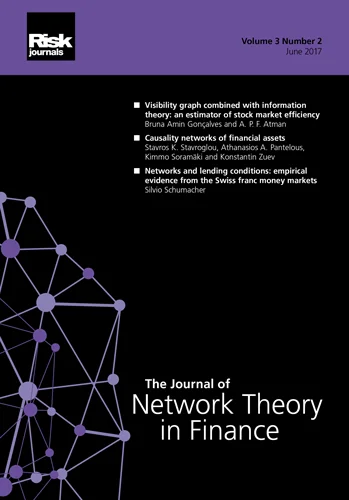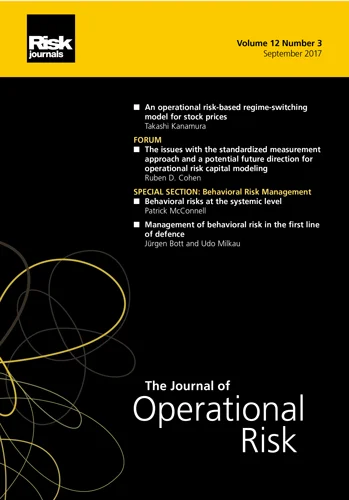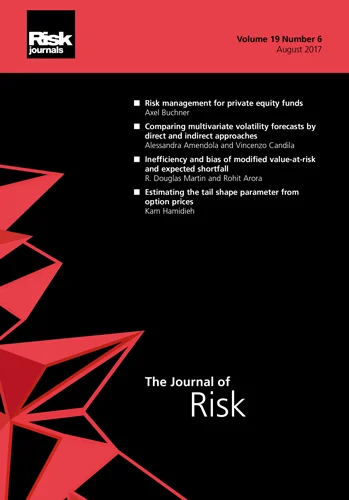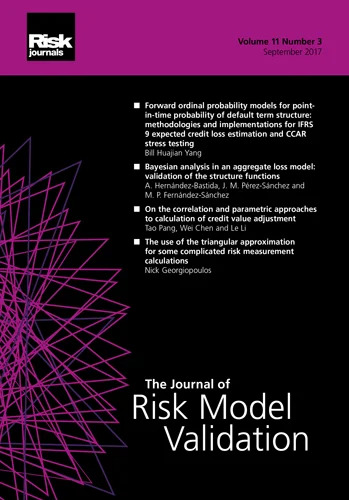Journal of Credit Risk
ISSN:
1755-9723 (online)
Editor-in-chief: Linda Allen and Jens Hilscher
Volume 21, Number 1 (March 2025)
Editor's Letter
José Aurazo
Bank for International Settlements
Julapa Jagtiani
Federal Reserve Bank of Philadelphia
It is our pleasure to introduce this financial technology (fintech) special issue of The Journal of Credit Risk, which includes some of the outstanding papers presented at recent high-profile conferences. The growth of fintech activities – whether that be the use of alternative data and artificial intelligence (AI) in credit decisions; new ways of making loans using cryptocurrencies as collateral; fintech partnerships allowing small banks (with resource constraints) to access today’s technologies; banking-as-a-service (BaaS), where millions of deposit accounts could be offered to consumers by a nonbank institution that partners with banks; or use of AI for regulatory compliance – has been phenomenal. Recently, we have observed upward and downward swings in the popularity of cryptocurrencies, blockchain, tokenization, etc. There is no better time to read our special issue focusing on fintech!
Most fintech lending papers focus on consumer lending. Small businesses are often treated like consumers in the lending space, because their ability to pay back a loan often relies on the business owner’s creditworthiness. However, small businesses do not get the same protection as consumers do, and thus their loan rates could be higher than 100% APR. The second paper in this special issue, “Fintech lending and firm bankruptcies” by Lam (Julia) Nguyen and Bin Qiu, focuses on fintech lending to small businesses. The authors examine the impact of fintech lending on small business bankruptcies, using county-level data from California from 2008 to 2023 (including the period of the global financial crisis). They find that increased fintech lending is associated with decreases in local bankruptcy rates, suggesting fintech lenders play a crucial role in supporting small businesses by maintaining credit access. These results are consistent with those of Cornelli et al (2024), who investigated loan-level data from two fintech small business lenders, and who find that fintechs helped close the credit gap, allowing small businesses that were less likely to receive credit through traditional lenders to access credit, potentially at a lower cost.
The potential impact of AI and other fintech tools is believed to be exponential. A large amount of data has been collected and used to feed into various AI and machine learning (ML) models. While AI/ML could pick up important relationships that would not be observed from traditional models, there have been concerns about the appropriateness and fairness of the data. Our third paper, “How magic a bullet is machine learning for credit analysis? An exploration with fintech lending data” by J. Christina Wang and Charles B. Perkins, compares and contrasts the various ML modeling techniques against the traditional regression analysis model in terms of their effectiveness at predicting default rates. The authors find that ML models have varying degrees of advantage over traditional models, depending on the specific model used, the sample size, the economic environment, etc. Overall, they find limited evidence that ML methods outperform logistic models for predicting defaults among borrower subgroups based on risk, income or location.
The potential impact of AI and other fintech tools is believed to be exponential. A large amount of data has been collected and used to feed into various AI and machine learning (ML) models. While AI/ML could pick up important relationships that would not be observed from traditional models, there have been concerns about the appropriateness and fairness of the data. Our third paper, “How magic a bullet is machine learning for credit analysis? An exploration with fintech lending data” by J. Christina Wang and Charles B. Perkins, compares and contrasts the various ML modeling techniques against the traditional regression analysis model in terms of their effectiveness at predicting default rates. The authors find that ML models have varying degrees of advantage over traditional models, depending on the specific model used, the sample size, the economic environment, etc. Overall, they find limited evidence that ML methods outperform logistic models for predicting defaults among borrower subgroups based on risk, income or location.
Fintech firms have also helped consumers gain access to credit through their buy-now- pay-later (BNPL) products, which allow consumers to pay for purchases over a period of 4–6 weeks with absolutely no interest charge. for example, about who uses BNPL, and whether BNPL has lured consumers to buy things they do not need and gets them into financial difficulty later. In “Researching new financial products: using survey evidence to gain insight into buy now, pay later”, the final paper in this issue, Tom Akana and Valeria Zeballos Doubinko attempt to answer some of these questions. The paper explores consumer usage of BNPL products and their potential impact on credit, using unique consumer survey data. From the authors’ initial surveys they find that BNPL products are predominantly used by younger individuals (aged 18–35), those earning over US$70,000 and those identified as minorities (Black or Hispanic). It is interesting to observe new BNPL trends from the most recent survey, which suggests that BNPL users are increasingly likely to make timely payments and are less likely to cite credit constraints as their motivation for using BNPL.
We appreciate all the authors’ contributions to this special issue. We are very grateful to editor-in-chief Linda Allen and to Thomas Paine at Risk Journals for all their help and support. Given the dramatic growth of fintech activities and their rise and fall in popularity in recent years, we believe these fintech papers will be helpful to our readers, whether they be academic researchers, industry practitioners or regulators/ policymakers. We hope that the findings in this issue and the questions that those findings raise will stimulate more conversation around the role of fintech in the future of finance. A second special issue on fintech, to appear in June, will focus on other fintech issues including cryptocurrencies, stablecoins and blockchain.
Papers in this issue
Deciphering bankruptcy risk in fintech firms: exploring key factors and implications
The authors delve into bankruptcy risk of Indian fintech firms, identifying the factors that most impact bankruptcy risk.
Fintech lending and firm bankruptcies
The authors use data from small business bankruptcy at a county level in California to investigate the impact of fintech lending.
How magic a bullet is machine learning for credit analysis? An exploration with fintech lending data
The authors apply machine learning techniques to consumer fintech loan data to assess how such techniques can improve out-of-sample default prediction.
Did fintech loans default more during the Covid-19 pandemic? Were fintech firms “cream-skimming” the best borrowers?
The authors propose a model which can be used to identify the "invisible prime" consumers from the nonprime pool for fintech loans.
Researching new financial products: using survey evidence to gain insight into buy now, pay later
The authors investigate early adopters of "buy now, pay later" payments and how the use of this service may effect a person's credit.
